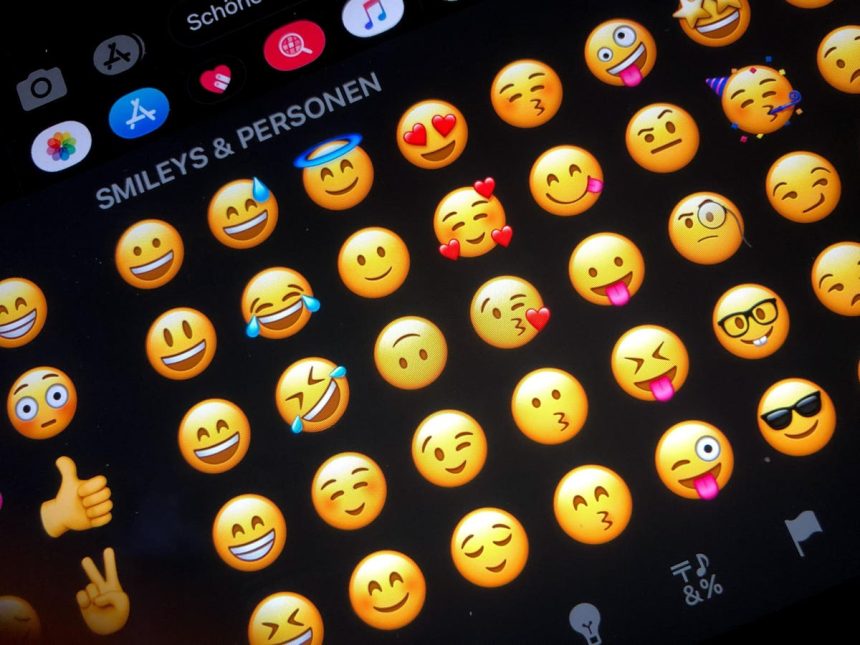As we celebrate World Emoji Day, it’s worth taking a closer look at the role of these expressive little symbols in the modern workspace. Because in an increasingly remote and digital professional environment, emojis have grown beyond their traditional domain of casual, personal communication, and are now fundamental elements in team interactions.
Communication is key in fostering effective teamwork, and emojis have proven to be valuable assets in this aspect. A study by Slack found that over half of the workers surveyed felt that emoji usage quickens the pace of workplace conversations and assists with nuanced communications. Emojis or “Reacjis” when used as reactions in messaging apps, can signify anything from the completion of tasks, agreement, to even vigorous affirmation.
In addition, emojis can be used to foster a sense of camaraderie and community among coworkers. While virtual meetings and emails may lack the kinetic energy of an in-person team meeting, emojis can help bridge that gap, creating a shared emotional connection between team members. Emojis can also convey messages and feelings that people may not feel comfortable expressing in words.
However, there’s a caveat—emojis can sometimes lead to misunderstandings. For instance, generational differences in the interpretation of emojis, as evidenced by the ongoing debate between Millennials and Gen Z over the meaning of a simple smile emoji—as reported by the Independent—confusion. Whether the smiley face is “passive aggressive” or “friendly,” it can lead to confusion within teams and across departments. Moreover, some emojis are understood differently across various cultures, leading to misinterpretations. For example, the thumbs up emoji might be seen as a sign of approval in some countries, while it is considered offensive in others.
So, to mitigate these risks, many teams are resorting to creating their own custom emojis. By developing a shared visual language based on common workplace experiences, these teams have enhanced communication efficiency and minimized misunderstanding. The Rising Team platform, for example, allows users to download custom, animated emojis for different workplace scenarios, thereby promoting a shared language around common workplace needs and situations.
Jennifer Dulski, the former Google and Facebook executive turned Stanford lecturer who founded Rising Team, explained in an email that while emojis have proven to be an effective communication tool, they are not always suitable. When giving constructive feedback or addressing serious topics, a no-emoji policy is usually advisable to maintain professionalism. On the other hand, emojis’ fun and casual nature can make them ideal for fostering relationships within teams and expressing individual personalities. “The key to making the most of emojis in the workplace is intentionality,” explained Dulski. “You need to understand when it is and isn’t appropriate to use them.”
For example, when communicating with a customer or colleague, starting the conversation with an emoji can help establish a positive rapport: a simple smile emoji sends the message that you’re friendly and approachable. On the other hand, ending the conversation with an ambiguous emoji such as a shrug or question mark could leave your customer or colleague feeling uncertain about how you really feel.
1. Understanding Context is Key
It’s vital to always consider the context before sending an emoji. Take into account not just the topic of conversation, but also who is at the receiving end of your message. Keep in mind the professional hierarchy and the nature of your relationship with the recipient. The use of emojis should complement the tone and content of the conversation. For instance, a thumbs-up emoji may be fitting for quick affirmation within your team, but it may not be suitable in a more formal interaction with a senior executive or an external partner.
2. The Golden Rule of Moderation
While emojis can add color and personality to a conversation, too many of them can potentially dilute your message and come off as unprofessional or immature. Striking the right balance is key. A good rule of thumb is to limit your use of emojis to a maximum of two or three in one message or conversation. Overusing emojis can lead to ambiguity and misinterpretation, thus negatively affecting your communication.
3. Formal Documents and Emails: Emoji-Free Zones
There are certain places where emojis don’t belong, and legal documents and emails are chief among them. Unless expressly requested or the organizational culture specifically allows for it, refrain from using emojis in formal settings. Even if it’s acceptable, ensure that the emojis you choose to use are appropriate for the context and the situation. Using emojis in professional settings should not detract from the conversation’s gravity or professionalism.
4. Learning from the Emoji-Fluent
The world of emojis can be complex and confusing, with new ones being added all the time and each potentially carrying different interpretations. If you’re uncertain how to use emojis properly, don’t hesitate to seek advice from someone more experienced with them. It could be a tech-savvy colleague, a digital communication expert, or even online resources. Being open to learning not only helps you avoid potential missteps but also helps you stay updated and relevant in a rapidly evolving digital communication landscape.
Ultimately, knowing when to maintain formality and when to loosen up is crucial. There are occasions for serious work and moments for playfulness. It’s all about sensing the environment and reading the virtual room. As we navigate the complex world of digital communication, we can leverage the power of emojis to build stronger teams and create more inclusive workplaces. This World Emoji Day, let’s appreciate these little symbols for making our work lives a bit more expressive and enjoyable.
Read the full article here










